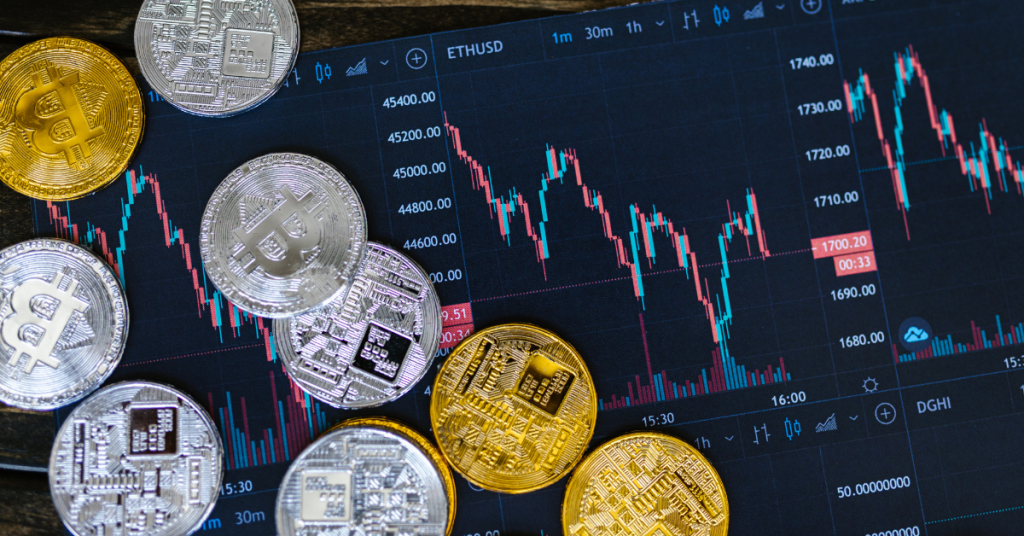
The post Why Cryptocurrency Trading Volume Matters to Investors [A Beginner’s Guide] appeared first on Coinpedia - Fintech & Cryptocurreny News Media| Crypto Guide
A metric known as trading volume can be used to measure how frequently a specific coin is exchanged on the market at any one time. Investors frequently consider trading volume as part of a broad range of financial products traded worldwide. Most traders consider a cryptocurrency’s trading volume to be one of the most important predictors of its future trajectory and performance in the cryptocurrency market.
What Does Volume Mean in Crypto?
The number of times a coin is traded in a certain period determines its trading volume. Investors must examine the volume generated by transactions on a specific exchange or across all exchanges. Speaking of trading, there are a lot of new platforms on the crypto market. That’s why, earlier this year, the experts from Dart Europe crypto media, made a dedicated Bitcoin Motion review, in which they are assessing this platform’s legitimacy. The website surprises with its simplicity and easeness for crypto beginners.
The most commonly used visual representation of accessible volumetric data is bar charts. These are frequently used within a 24-hour timeframe, which is more often than not used by traders. It’s also worth noting that, depending on the number of deals, cryptocurrency values have a tendency to spike or plummet.
You must compute the trading volume in cryptocurrencies to establish the overall worth of a particular cryptocurrency that has changed over time. Volume is a crucial indicator for traders when projecting how profitable cryptocurrencies will be in the future.
Exchanges may levy fees on bitcoin transactions conducted on their platforms to generate money. When there are many bitcoin transactions, fair crypto prices can be attained.
A low crypto exchange traffic shows inefficiency or low deals when sellers’ asking prices do not match the bids of prospective buyers.
The terms liquidity and bitcoin volume are sometimes used interchangeably, although they are not the same thing. On the other hand, liquidity refers to the amount of money that can be traded at any given price regardless of volume.
Why Is It Important?
Because smaller exchanges offer less crypto liquidity, it’s vital to maintain track of your bitcoin assets. Consider the case of a dealer who wants to sell one million SHIB coins. If you want to sell one million SHIB, you would have to go through hundreds of buy orders, each at a slightly lower price.
When fewer buyers and sellers are on an exchange, the phrase “slippage” describes the lower price a trader obtains for her coins. If there are no purchase orders, a trader must put new sell orders hoping that they will be filled at some point. Purchasing a coin with a low trading volume, on the other hand, may incur a higher cost than purchasing a coin with a higher trading volume. As a result of needing to purchase already-placed sell orders, prices rise.
In general, higher volume leads to more consistent pricing and lower volatility. There’s a potential that huge price swings and volume spikes will occur during times of extreme fear or greed. Large-volume coins and assets, on the other hand, large-volume coins and assets tend to be less volatile.
What Does It Imply?
The number of cryptocurrency trades indicates how popular a coin is. Higher volumes may pique people’s interest in a cryptocurrency by allowing them to buy and sell it more frequently.
Increased trade volume could signal a positive or bearish trend in the market’s outlook. Meme currencies like Dogecoin (DOGE) and Shiba Inu (SHIB) have experienced a lot of volume during their enormous market rises. Many of these currencies fade, and trading volume falls in lockstep as time passes. At the same time, high-volume and low-volume cryptocurrencies may exist. When trading volume is low, it means investors aren’t interested in buying or selling a particular asset. There could be a lot of reasons for this. If prices differ from the volume of deals, they could not be telling the whole story.
Is It Possible to Forget It?
Yes, “wash trading” is a technique for swapping volume. It’s not uncommon for traders to put both buy and sell orders simultaneously. The orders may cancel each other out, leaving the market unchanged. The market appears to be bustling, yet this is background noise.
Increased volume means more traders are using the exchange’s platform, which equals more money in the long run.
HFT algorithms may be to blame for a significant amount of the fictitious volume in bitcoin markets. They are, in essence, automated trading systems that can quickly execute a large number of transactions.
Some traders may prefer decentralised exchanges to centralised exchanges due to concerns about the phony volume on the latter.
Conclusion
The volume of a coin’s trades is the most important metric for many cryptocurrency traders. The volume of bitcoin trades serves as a barometer of market activity. The stock market has a similar volume to what has been detailed here, but wash dealing in shares is subject to tougher restrictions.

 3 years ago
176
3 years ago
176














 English (US) ·
English (US) ·